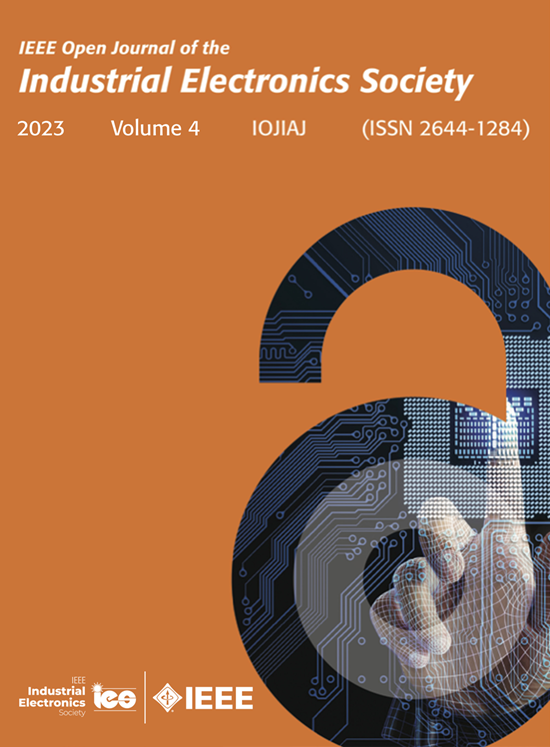Immunity of Grid-Forming Control Without Energy Storage to Transient Changes of Grid Frequency and Phase
IF 4.3
Q1 ENGINEERING, ELECTRICAL & ELECTRONIC
IEEE Open Journal of the Industrial Electronics Society
Pub Date : 2025-01-22
DOI:10.1109/OJIES.2025.3532517
引用次数: 0
Abstract
European grid operators in ENTSO-E and others with a significant amount of inverter-based generation are experiencing a reduction in system inertia and short-circuit power. The changes in these key parameters are due to both an increasing number of inverter-based resources and also STATCOMS and HVDC terminals operating in a grid-following mode. Grid-forming control is a promising technology for renewable energy resources to provide appropriate grid support. However, wind energy and photovoltaic units cannot increase their active power output when operating in a maximum power point mode, as it would be needed for full grid-forming operation. Both operating at less than optimum power output or adding storage would increase the cost of generation. This article proposes extensions to the grid-forming control of inverter-based energy resources without energy storage. This would limit grid supporting nature for positive frequency or phase changes only. The proposed extensions give grid-forming control the necessary immunity to negative frequency or phase changes without the need to rely on a fast phase-locked loop or fast current control loops. This proposed control scheme has been used to evaluate the response to grid disturbances given in the ENTSO-E Phase I report of the task force grid-forming control published in April 2024.无储能成网控制对电网频率和相位暂态变化的抗扰性
ENTSO-E的欧洲电网运营商和其他拥有大量逆变器发电的电网运营商正在经历系统惯性和短路功率的减少。这些关键参数的变化是由于基于逆变器的资源数量的增加,以及STATCOMS和HVDC终端在电网跟随模式下运行。并网控制是一种很有前途的技术,可为可再生能源提供适当的电网支持。然而,风能和光伏发电机组在最大功率点模式下不能增加其有功输出,因为这需要完全并网运行。在低于最佳功率输出的情况下运行或增加存储都会增加发电成本。本文提出了非储能逆变器能源并网控制的扩展。这将限制电网对正频率或相位变化的支持性质。所提出的扩展使成网控制对负频率或相位变化具有必要的抗扰性,而不需要依赖快速锁相环或快速电流控制环。该控制方案已被用于评估在2024年4月发布的电网形成控制工作组的ENTSO-E第一阶段报告中给出的对电网扰动的响应。
本文章由计算机程序翻译,如有差异,请以英文原文为准。
求助全文
约1分钟内获得全文
求助全文
来源期刊

IEEE Open Journal of the Industrial Electronics Society
ENGINEERING, ELECTRICAL & ELECTRONIC-
CiteScore
10.80
自引率
2.40%
发文量
33
审稿时长
12 weeks
期刊介绍:
The IEEE Open Journal of the Industrial Electronics Society is dedicated to advancing information-intensive, knowledge-based automation, and digitalization, aiming to enhance various industrial and infrastructural ecosystems including energy, mobility, health, and home/building infrastructure. Encompassing a range of techniques leveraging data and information acquisition, analysis, manipulation, and distribution, the journal strives to achieve greater flexibility, efficiency, effectiveness, reliability, and security within digitalized and networked environments.
Our scope provides a platform for discourse and dissemination of the latest developments in numerous research and innovation areas. These include electrical components and systems, smart grids, industrial cyber-physical systems, motion control, robotics and mechatronics, sensors and actuators, factory and building communication and automation, industrial digitalization, flexible and reconfigurable manufacturing, assistant systems, industrial applications of artificial intelligence and data science, as well as the implementation of machine learning, artificial neural networks, and fuzzy logic. Additionally, we explore human factors in digitalized and networked ecosystems. Join us in exploring and shaping the future of industrial electronics and digitalization.
 求助内容:
求助内容: 应助结果提醒方式:
应助结果提醒方式:


